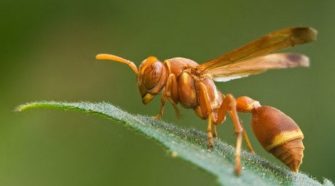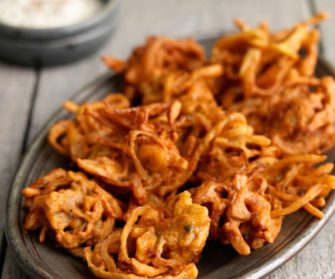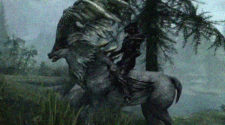The construction worker who worked on the gallery of our house was either tired, careless, (or he was like the proud worker who purposely (allegedly) left a dripping tile at the Taj Mahal) he misaligned the slope on a single corner tile of the gallery. The gallery tiles are sloped to such perfection that the gallery becomes pitch dry within minutes of washing, except for this one tile. You have to take a cloth to absorb and drain the water.
During the initial days of the lockdown, I willfully engaged in this time-wasting activity. I wanted the entire gallery to remain dry the whole day, and one wet tile was coming in the way. So, I engaged in manual labor to mop and drain the tile. By the way, the mop with centrifugal bucket dryer is an article on its own.
However, with time, I adjusted to the new normal, and my OCD tempered down. The tile remains wet till evening until a combination of sun and wind auto dry it. (Why does the gallery get wet? my OCD has tempered, not vanished!)
Then, I began to observe – besides becoming a breeding ground for light green algae, the wet tile has become a drinking pond of sorts. Now, remember I talking about a one to two mm layer of water in the corner, not a puddle. Yet, this thin layer of water was identified as the source of drinking water by a ‘Gandhil Mashi.’ For those who don’t know, it is a kind of a Wasp. Those who have endured mind-numbing pain from its bite can understand my horror when I saw it hovering in the gallery. However, it calmly passed me without acknowledging me, settled on the edge of the tile, dipped its mouth for a few seconds, and once again flew past me. And, Yes, I stood frozen in fear all the time. Last time everyone advised me to stand still when the Gandhil Mashi is around you, then apparently it does not bite! Even though I cannot claim to have the mental sharpness to recall the advice and follow it, my actions were more of a mental shut down from fear.

I soon observed (from inside the house, behind a glass wall) that the Gandhil Mashi was flying out a good two to three hundred meters to make it to the water. Such a tiny little insect with tiny little wings flying distances a thousand times its size for a sip of water. That too, not just once, several round trips in the day. I also realized we have two of them making the trip, never together, taking turns, as if keeping a watch out for each other.
Talking of keeping a watch out for each other. At the other end of the gallery, a bird couple has built its nest. The duo follows the same pattern; one bird stands watch on the railings as the other makes way into the nest. Their nest is on a lemon tree.
Yes, a lemon tree (the one’s from which we make lemon juice) has auto sprung in the corner of the gallery. It chose to emerge near the drain, in an abandoned/broken concrete fountain. The drain is leaking into the fountain, or some physics phenomenon of water evaporation and condensation occurs. The broken fountain is awash with moisture promoting vegetation growth in that corner. However, by virtue of being a corner, its area remains in the shade of two walls. Bereft of sunlight, the development seems sporadic; maybe that’s why we have seen only green lemon in the last two years. The tree is spending its nutrition in trying to outgrow the walls and reach sunlight. It faces some ‘healthy competition’ from a creeper – the money plant, adding to its woes.
The ‘money’ plant is an excellent example of evolution by natural selection. If you are a plant on this planet inhabited by seven billion-plus humans, you better ‘select’ your name to do something to do with money. Otherwise, the creeper is utterly useless; no flowers, no fruits, it just grows. Annoyingly as it rises higher, it sheds the leaves at its base. To prevent the area from looking barren and destroying the landscaping, you have to re-route the creeper to cover the same region. Plus, the trunk, more appropriately let’s call it the base, dries over time and becomes brittle. If the network of strings holding the creeper fails, the plant simply collapses. The brittle ‘base’ unable to bear weight ‘snaps.’ All you are left with is green foliage to dump, a barren stick- back to square one.
In this jumble of money plant and the lemon plant, the birds have their nest. As proud members of their fraternity, they proceed to build their own new nest, refusing to re-occupy a previously constructed nest. But, I think this tactic adds to their camouflage. The birds seem to disappear in the jumble of branches, and you are never sure which exact nest they occupy.
Plus, they do need camouflage. These slightly greenish birds are tiny, about half the size of a regular sparrow! They look like a miniature sparrow without the constant ‘chiv-chiv.’ Actually, I don’t know what they sound like. Either the species is a silent species or those in the gallery have lost their vocal cords. Their small wings are equally noiseless. They just appear and disappear like Houdini.
To ‘assist’ them (not that they seemed to need any), I started to leave some rice or wheat grains on the railing. The post-liberalization environment in India began a competition of sorts. Who can urbanize better? The sparrow or the pigeon. By now, we all know the outright winner of the tussle is the pigeon. Sparrows apparently still need some green to survive. The newer generations of pigeons have wholly embraced the city lifestyle and the concrete jungle. Soon, the railing was full of ten to fifteen pigeons competing for the grains and spilling half of the grains in their fights.
Interestingly, the pigeons fight only amongst themselves. If another bird comes to join in on the feast, they are not bothered. They make way for the tinier birds like sparrows, red-whiskered bulbuls, but the moment another pigeon flies in, the fights begin. Is it some form of urban psychology? I wonder.

Taking of birds, the most surprising birds I see every day in this lockdown is a pandemonium of parrots. Someone in our apartment complex seems to be feeding them, feeding them really well. A week back, I saw the parrots munching with their dark red beaks on a pomegranate. Not the one you throw when they start rotting, an excellent fresh organic variety pomegranate, neatly cut and arranged for the guests.
The most surprising part of this fauna is our neighborhood cat. Content is observing all these birds. The cat takes a pouncing stance; however, it is more out of instinct than intention. She is merely curious. After all, what is the need for hunting on a full stomach! The birds, the cats, nod at each other as if they are in a Guy Ritchie film. The silent harmony is occasionally broken by barking dogs’, the creature with the most purposeless activity in the entire group.
The birds move because they are seeking food, gathering material for their nest. They raise their vocal cords only for their partners, to alert or to call them for food.
The insects, including the Gandhil Mashi, move around noiselessly drinking water, and I don’t know what it eats. Still, I guess it must be needing water as it feeds on something. The cat is content in observing from a distance, changing her stance, but never leaving her place, no wasteful effort there either. But, the dog can bark and run aimlessly for no reason. It sees a bird, it barks. It never intends to hunt the bird, nor any chance the bird is hunting the dog, but still, a bark has to come out. It sees a cat it has to bark, a new human, it has to bark, even when it sees a creature of its own species at a distance, they bark. I once caught a dog barking at the parrots. As intelligent creatures they are, the parrots quickly made a calculation that the chance the dog reaches their height is smaller than the possibility that an asteroid hitting the earth and wiping out life. So, they calmly continued with their lunch without flinching to the loud sound. The dog kept on barking the whole time. Finally, once their meal was done, the parrots took off. The dog ‘priding’ itself on repelling the intruder, started to run around, searching for the next bird to bark at.
This lockdown has given birth to a whole new ecosystem around us, or maybe the ecosystem already existed without an observer like me. I will control my temptation to meander into an entire segment on the Schrodinger’s Cat and talk about another meandering. It is this book I am reading from the great Pu La Deshpande. It is one of his early works, not as popular as his other works ( at least no audio/video exists). The book is full of short pieces, craft observation, subtle humor, with sleight of hand sarcasm. This contrasts with his other works, which have heavy gags, front end humor, and deep sarcasm. This book simply meanders from one topic to another, one observation to the next, random, pleasant, fun. It is like idiagress before Idiagress – from a couple of generations back. I sit in the gallery, observing the fauna around me, eating hot bhaji, turning the pages of this beautiful book aptly titled ‘नस्ती उठाठेव.’ (अगर कहीं स्वर्ग है, तो यहीं है, यहीं है, यही हैं)














Thr mention of construction worker made me think finally you are writing on lockdown exodus supported by Sonu sood, but you diaggressed.
Oh those early days of the lockdown!! for us few they were a real hard window into things we had ignored for so long